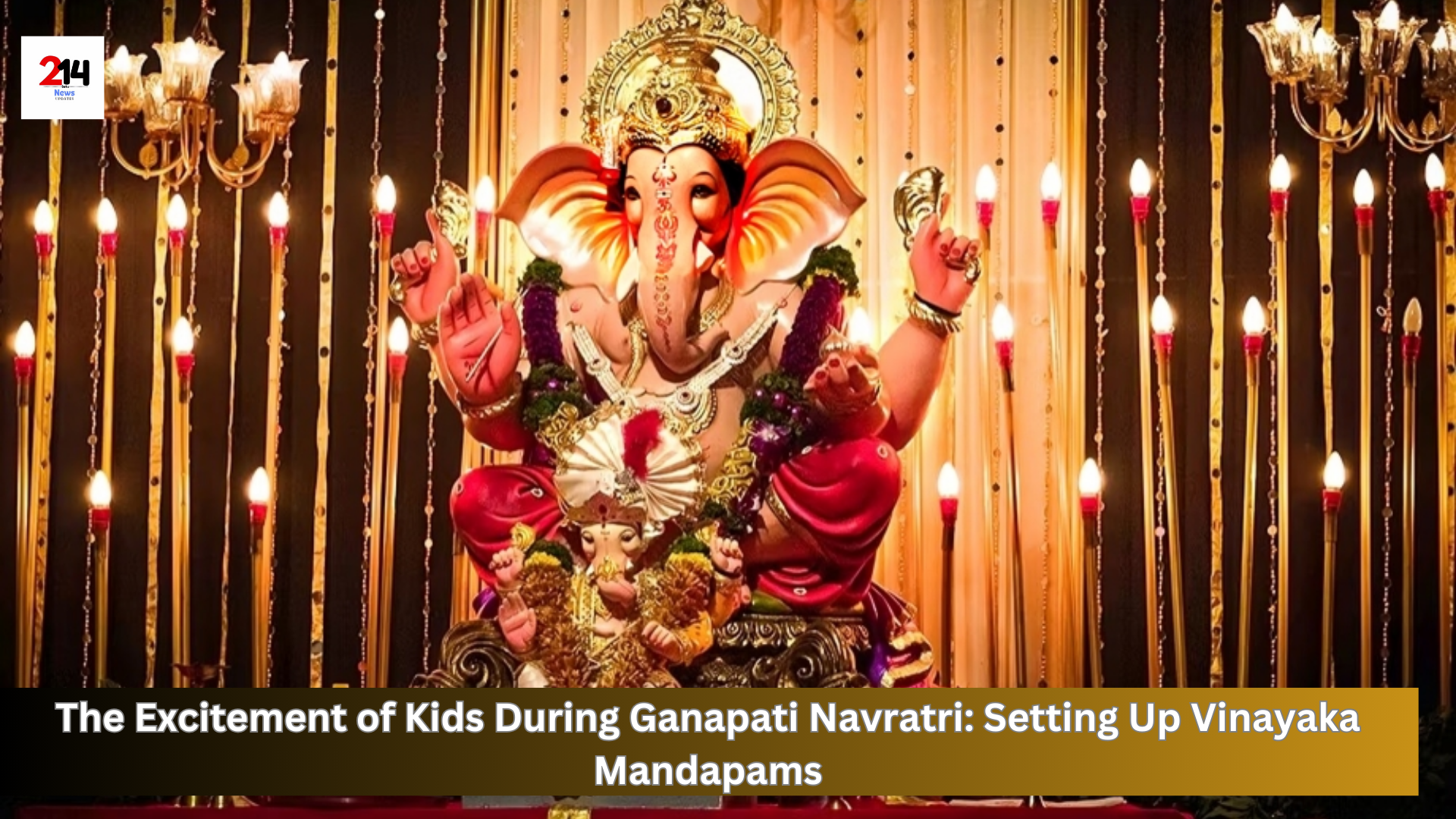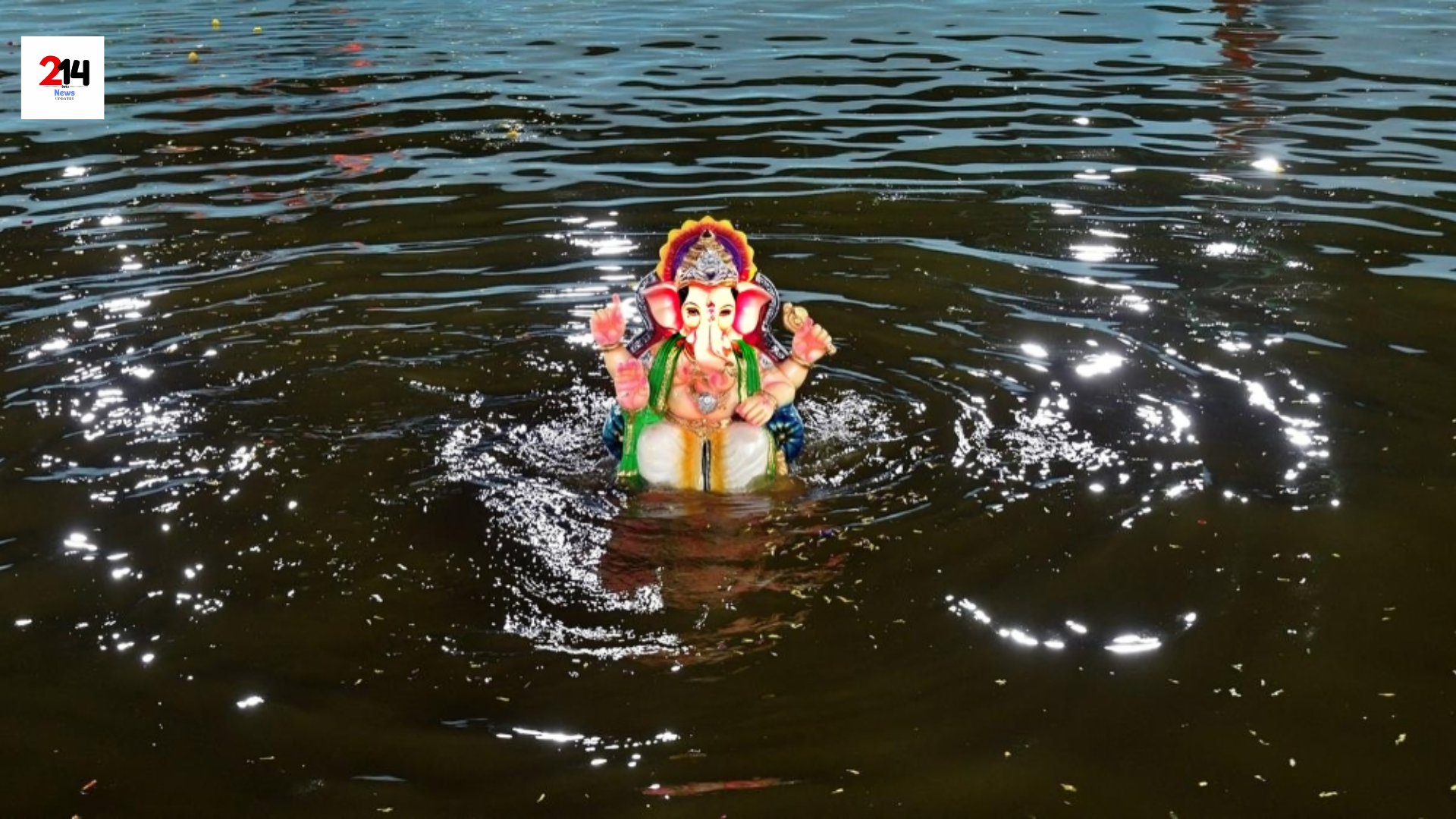
Ganapati Navratri, more popularly known as Ganesh Chaturthi, is vastly observed by the Hindus of India. It holds more importance in states such as Maharashtra, Telangana, and Andhra Pradesh. The god who moves obstacles for people and provides them with new beginnings is Lord Ganesha. The number of days it is celebrated is then concluded by the Visarjan of the Ganesha idols in water to symbolize the farewell of the deity.
What are Vinayaka Mandapams?
A distinctive feature of Ganapati Navratri is the setting up of Vinayaka mandapams. These are temporary pavilions or platforms where Ganesha idols are placed and worshipped. Many neighbourhoods will have mandpams put up by local people, even children.
Children’s Role in Setting Up Mandapams
The festival gives a great deal of prominence to the children. In most areas, children fondly get together to erect their own small mandapams. These children contribute money either by collecting their pocket money or asking for donations from all their neighbors. Afterwards, the money is used to buy the decoration material and small-size Ganesha idols.
Even though big mandapams are set up by local committees or groups, the ones made by children are something else. They are simple yet brimming with ingenuity. Kids use colored paper, flowers, and clay to make their mandapams look beautiful. This not only reflects their creativity but also connects them to their culture.
A Fun and Friendly Competition
During the time of Ganapati Navratri, one would most commonly notice a competition amongst kids from each street or area. Each group tries to make their mandapam look either the best or the most unique. It invokes creativity in them and brings up new ideas regarding decoration and themes. Sometimes, they depict stories about Hindu mythology, or they choose themes that are important to them.
It’s not a win-at-all-costs type of competition; it helps the children learn to work in a team, therefore making their bonding with each other stronger. They learn to plan and create budgets, and to solve problems-all while having fun.
Learning About Culture and Community
They will also understand their own cultural traditions much better by participating in these activities. Community and the coming together of everyone for celebrating something important is what they learn. Even the setting up of a mandapam itself and taking care of it during the festival teaches them responsibility and teamwork.
Children feel very proud and very happy when everyone comments on their mandapam. They gain a lot of confidence through this and feel attached to the community and culture.
Conclusion
Ganapati Navratri represents a festival of bliss, where communities come and celebrate in glee. Even the children are involved in setting up the Vinayaka mandapams-a great way to pass on the tradition to the next generation. It goes to show how festivals can teach valuable lessons about culture, creativity, and cooperation in general.
Government Clears Illegal Shops and Tea Stalls on Osmania University Campus Footpaths
During these activities, the children have a lot of fun while sharing the spirit of Ganesh Chaturthi with everyone. In a world that is in continuous evolution, these remind us of community bonds, culture, and shared delight.

